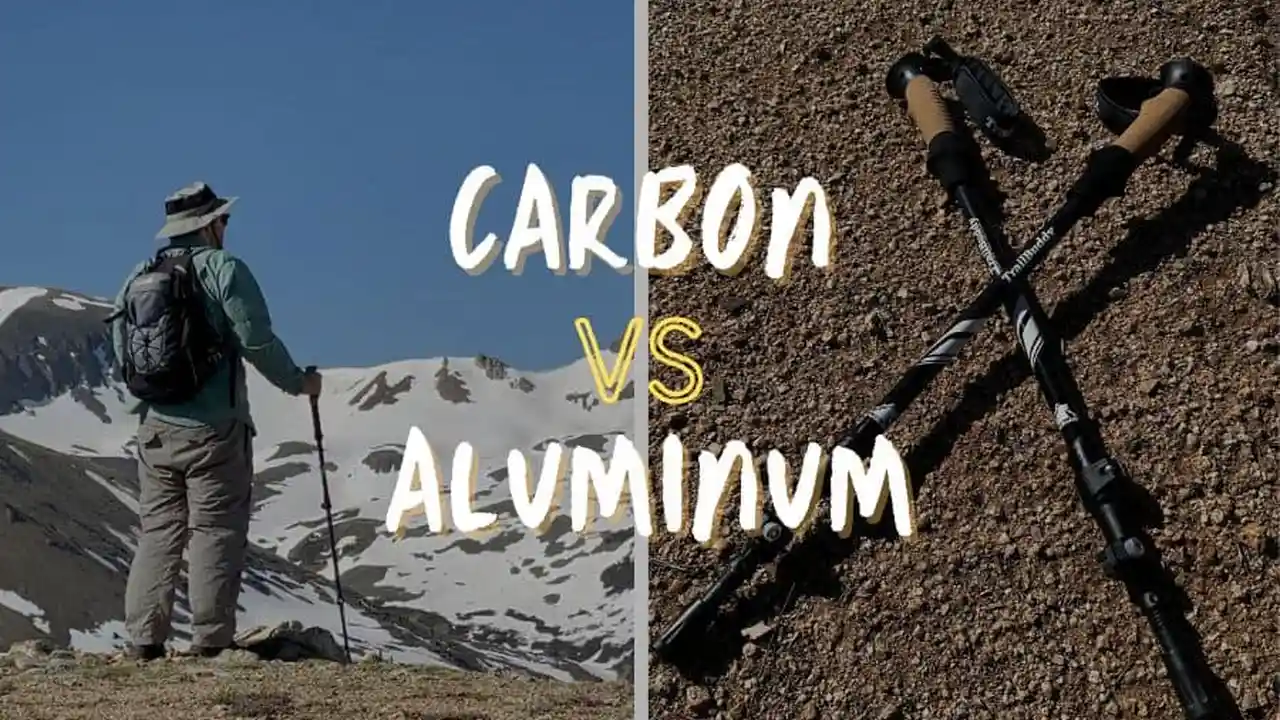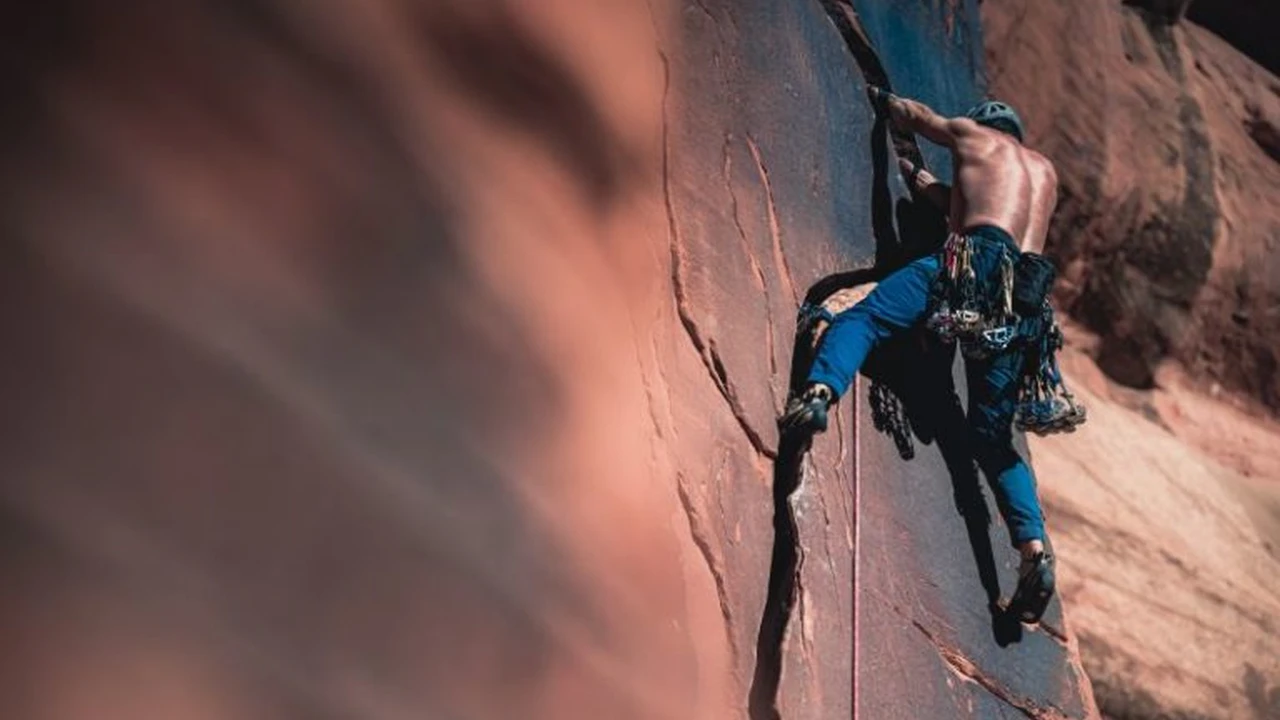Comparing Hiking Poles Carbon Fiber vs Aluminum
Enhance your hike with the best hiking poles. A comparison of carbon fiber vs aluminum for weight and durability.

Comparing Hiking Poles Carbon Fiber vs Aluminum
Hiking poles have become an indispensable tool for many outdoor enthusiasts, from casual day hikers to serious thru-hikers. They offer a myriad of benefits, including improved balance, reduced strain on joints, increased propulsion on ascents, and even assistance with river crossings or setting up shelters. But once you decide to invest in a pair, you're immediately faced with a crucial choice: carbon fiber or aluminum? Both materials have their distinct advantages and disadvantages, and understanding these differences is key to selecting the best poles for your specific needs and adventures.
The Core Materials Understanding Carbon Fiber and Aluminum
Let's break down what each material brings to the table. This isn't just about weight; it's about durability, feel, and how they perform under different conditions.
Carbon Fiber Hiking Poles Lightweight Performance
Carbon fiber poles are often considered the premium option, and for good reason. They are constructed from thin strands of carbon woven together and then set in a resin. This process creates a material that is incredibly strong for its weight.
Advantages of Carbon Fiber Poles
- Ultra-Lightweight: This is the primary selling point. Carbon fiber poles are significantly lighter than their aluminum counterparts, which can make a huge difference over long distances or extended trips. Less weight means less fatigue, especially when you're swinging your arms thousands of times a day.
- Vibration Dampening: Carbon fiber has natural shock-absorbing properties. This means less vibration is transferred from the ground up to your hands and arms, leading to greater comfort, especially on hard surfaces or during long descents.
- Stiffness: Despite being lightweight, carbon fiber poles are very stiff, providing excellent support and power transfer.
Disadvantages of Carbon Fiber Poles
- Fragility to Impact: While strong in a linear direction, carbon fiber is more susceptible to shattering or cracking upon sharp impact, such as getting wedged between rocks or falling directly onto a sharp object. Once cracked, the integrity of the pole is compromised, and it's often irreparable.
- Higher Cost: Due to the manufacturing process and material cost, carbon fiber poles are generally more expensive.
- Less Repairable: If a carbon fiber pole breaks, it's usually game over. You can't bend it back into shape like aluminum.
Aluminum Hiking Poles Durability and Value
Aluminum poles are the workhorses of the hiking world. They are typically made from high-grade aluminum alloys, such as 7075 aluminum, known for its strength and resilience.
Advantages of Aluminum Poles
- Exceptional Durability: Aluminum is incredibly tough and resistant to bending and breaking. If an aluminum pole gets caught or takes a hard fall, it's more likely to bend than snap. A bent pole can often be straightened enough to continue your hike, or at least get you back to civilization.
- Lower Cost: Aluminum poles are generally more affordable, making them a great option for budget-conscious hikers or those just starting out.
- Reliability in Harsh Conditions: Their robustness makes them a favorite for challenging terrain, winter hiking, or situations where poles might take a beating.
Disadvantages of Aluminum Poles
- Heavier: The most significant drawback is their weight. While not excessively heavy, the difference is noticeable compared to carbon fiber, especially over long distances.
- Less Vibration Dampening: Aluminum transfers more vibration from the ground, which can lead to more hand and arm fatigue on extended hikes.
- Can Bend: While bending is better than breaking, a severely bent pole can be difficult to use and may not regain its original strength.
Key Considerations for Choosing Your Hiking Poles
Beyond the material, several other factors play a role in making the right choice. Think about your typical hiking environment, your body, and your budget.
Hiking Terrain and Conditions Pole Performance
Consider where you'll be using your poles most often. If you're primarily on well-maintained trails with minimal risk of impact, carbon fiber's lightness is a huge plus. However, if you're bushwhacking, scrambling over rocky terrain, or navigating dense forests where poles might get snagged or jammed, the resilience of aluminum might be more appealing. For winter hiking or mountaineering, where poles might be used for self-arrest or leverage in icy conditions, aluminum's robustness is often preferred.
Weight vs Durability Finding Your Balance
This is the eternal debate. For ultralight backpackers or those covering vast distances like on the Appalachian Trail or Pacific Crest Trail, every ounce counts, making carbon fiber a strong contender. However, if you prioritize bombproof reliability and don't mind a few extra ounces, aluminum is the way to go. Think about your personal tolerance for weight and your risk assessment for potential pole damage.
Budget and Investment Cost-Benefit Analysis
As mentioned, carbon fiber poles come with a higher price tag. While they offer superior performance in terms of weight and vibration dampening, you need to decide if that premium is worth the investment for your usage. For casual hikers, a less expensive pair of aluminum poles might be perfectly adequate and save you some money for other gear.
Adjustability and Locking Mechanisms Secure Pole Use
Regardless of material, the locking mechanism is crucial. There are generally two main types:
- Lever Locks (External Locks): These are quick, easy to adjust, and generally more reliable, especially in cold or wet conditions. They use a lever to clamp down on the pole sections.
- Twist Locks (Internal Locks): These are lighter and more compact when collapsed but can be prone to slipping, especially if they get wet or dirty. They work by twisting the pole sections to expand an internal wedge.
Many modern poles combine both, with a lever lock for the main adjustment and a twist lock for fine-tuning. Look for poles with reliable locking mechanisms that won't collapse unexpectedly.
Grips and Straps Comfort and Ergonomics
The material and design of the grips are important for comfort and preventing blisters. Common materials include:
- Cork: Molds to your hand over time, wicks away sweat, and offers good insulation.
- Foam: Lightweight, soft, and absorbs sweat well.
- Rubber: Durable and good for wet conditions, but can cause chafing or blisters on long hikes.
Adjustable wrist straps are also essential for proper technique and transferring weight to your arms, reducing strain on your hands. Look for comfortable, breathable straps.
Baskets and Tips Versatility for Different Surfaces
Poles usually come with small trekking baskets for general use. Larger snow baskets are interchangeable and essential for winter hiking or snowshoeing to prevent the poles from sinking too deep. Tips are typically carbide for grip on hard surfaces, but rubber tips can be added for use on pavement or to protect trails.
Recommended Hiking Pole Models and Use Cases
Let's look at some popular models and discuss their ideal use cases, along with approximate pricing.
Carbon Fiber Pole Recommendations
Black Diamond Distance Carbon Z Poles
- Description: These are incredibly lightweight, Z-fold style poles, meaning they collapse quickly into three sections. They are designed for fast-and-light adventures, trail running, and ultralight backpacking.
- Ideal Use: Thru-hiking, trail running, fastpacking, day hikes where minimal weight is paramount.
- Pros: Extremely light, compact, quick to deploy.
- Cons: Not adjustable in length (fixed length), less durable than aluminum for heavy abuse, higher price point.
- Approximate Price: $150 - $180 USD
Leki Micro Vario Carbon Poles
- Description: Leki is renowned for its quality, and these poles combine the Z-fold design with a Speed Lock 2 external locking mechanism for adjustability. They offer a great balance of light weight and versatility.
- Ideal Use: Backpacking, trekking, general hiking where adjustability and light weight are desired.
- Pros: Lightweight, compact, adjustable length, comfortable Aergon Air grips.
- Cons: Still susceptible to impact damage, premium price.
- Approximate Price: $180 - $220 USD
Aluminum Pole Recommendations
Black Diamond Trail Ergo Cork Trekking Poles
- Description: These are a classic for a reason. Made from durable aluminum, they feature comfortable cork grips and reliable FlickLock external adjustability. They are a solid, all-around workhorse.
- Ideal Use: General hiking, backpacking, day trips, rugged terrain, winter use.
- Pros: Very durable, reliable, comfortable cork grips, excellent value.
- Cons: Heavier than carbon fiber, less vibration dampening.
- Approximate Price: $100 - $130 USD
MSR DynaLock Explore Poles
- Description: MSR brings its mountaineering expertise to these aluminum poles, featuring a robust DynaLock system and an extended foam grip for versatility on steep terrain.
- Ideal Use: Mountaineering, snowshoeing, challenging treks, heavy-duty use.
- Pros: Extremely robust, reliable locking mechanism, extended grip for varied hand positions.
- Cons: Heavier, higher price for aluminum.
- Approximate Price: $140 - $170 USD
Hybrid Pole Options Best of Both Worlds
Some manufacturers offer hybrid poles that combine materials, often using carbon fiber for the upper sections for weight savings and aluminum for the lower sections for increased durability where impact is more likely. These can be a great compromise if you're torn between the two.
REI Co-op Flash Carbon Trekking Poles
- Description: These poles feature a carbon fiber upper shaft and an aluminum lower shaft, aiming to balance weight and durability. They use external lever locks.
- Ideal Use: Backpacking, general hiking, for those who want some weight savings without sacrificing too much durability.
- Pros: Good balance of weight and durability, more affordable than full carbon.
- Cons: Still not as light as full carbon, not as bombproof as full aluminum.
- Approximate Price: $120 - $150 USD
Maintenance and Care Extending Pole Lifespan
No matter which material you choose, proper care will extend the life of your hiking poles. After each use, especially in wet or muddy conditions, extend the poles fully and wipe them clean. Allow them to air dry completely before collapsing and storing them to prevent corrosion or mildew. Regularly check the locking mechanisms for debris and ensure they are functioning correctly. Replace worn-out tips and baskets as needed. Store them in a dry place, ideally extended or loosely collapsed, to prevent stress on the locking mechanisms.
Final Thoughts Making Your Pole Decision
The choice between carbon fiber and aluminum hiking poles ultimately comes down to your personal priorities and the type of adventures you embark on. If you're an ultralight enthusiast, a thru-hiker, or someone who prioritizes minimal weight and vibration dampening, and you're willing to pay a premium and be mindful of potential impacts, carbon fiber is likely your best bet. However, if you're looking for maximum durability, reliability in rugged conditions, and a more budget-friendly option, aluminum poles will serve you exceptionally well. Many experienced hikers even own both types, choosing the appropriate pair based on the specific demands of their next trip. Whichever you choose, incorporating hiking poles into your gear setup will undoubtedly enhance your outdoor experience, providing stability, support, and a little extra push on the trail.
:max_bytes(150000):strip_icc()/277019-baked-pork-chops-with-cream-of-mushroom-soup-DDMFS-beauty-4x3-BG-7505-5762b731cf30447d9cbbbbbf387beafa.jpg)






